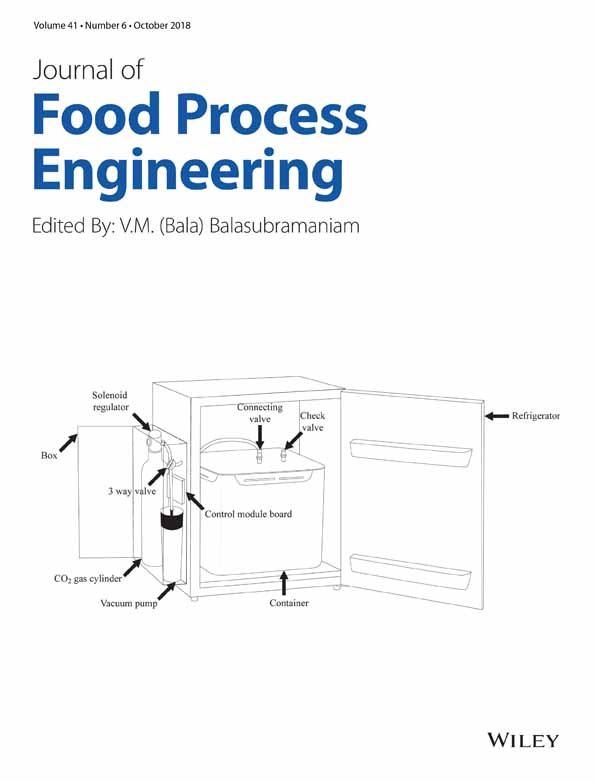Local air velocity, a key factor governing the Raclette cheese mass loss in an industrial ripening room
Funding information: European Commission under the 7th RTD Framework, Grant/Award Number: 613827
Abstract
Raclette cheeses arranged in racks were ripened in an industrial ripening room under temperature, relative humidity, and air circulation control. Cheese mass loss was investigated via two ripening trials and by weighing nine racks located at chosen places in the ripening room. Air velocity (varying from 0.06 to 0.48 m/s as a function of the distance of the textile ventilation ducts that ensure air circulation) had the greatest effect on mass loss (changing from 4.1 to 8.7% of the initial mass). The higher the air velocity was, the greater the cheese mass loss was. The racks at the top of the stacks significantly exhibited the highest mass loss. Linear and exponential relationships between mean cheese mass loss rate and air velocity are proposed. Compared to continuous ventilation, time-based sequential ventilation led to a mean reduction of mass loss of about 0.75% and confirmed a reduction in energy consumption (about 42%).
Practical applications
The control of air circulation in industrial cheese ripening rooms is difficult, and considerable heterogeneities in air velocity are often observed. The higher the air velocity is, the greater the cheese mass loss will be, so it is important to know the air velocity distribution inside the ripening room and to obtain and maintain air velocities close to 0.08 m/s, thus favoring homogeneous cheese mass loss. Knowledge of the variations in cheese mass loss as a function of the ripening conditions and of the changes in air velocity must be improved so that cheese-makers can limit mass loss while maintaining ripened cheese quality, as well as significantly increasing cheesemaking yield.
Opting for sequential ventilation (a time or temperature-based process) at the industrial cheese ripening scale can provide economic benefits by reducing energy consumption and decreasing cheese mass loss.




